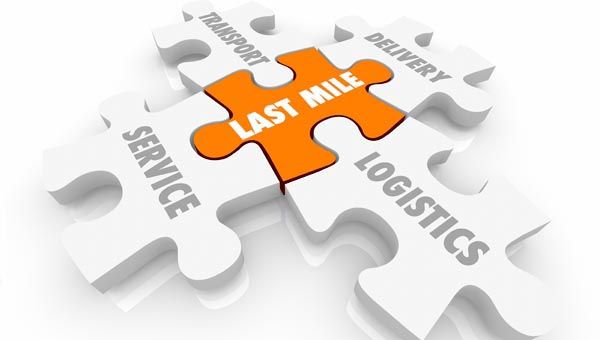How do you increase first attempt delivery rates with order tracking and customer notifications?
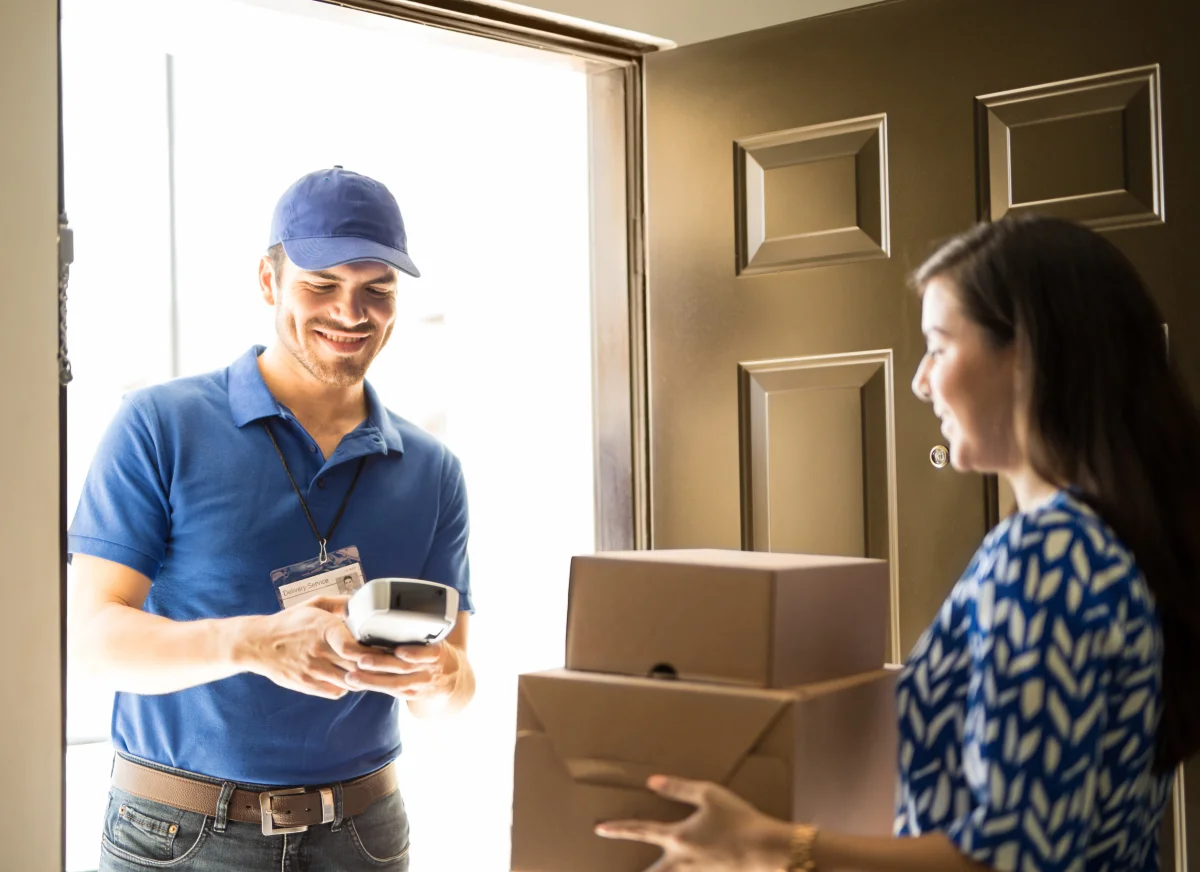
Implementing order tracking and delivery notification software is the best way to improve first-attempt delivery rates (FADR or First-time delivery rate). Self-service portals, real-time ETA order tracking, and two-way communications from the consumer with the driver or customer services are just some of the ways Descartes can help.
For companies making home deliveries, ensuring the package is delivered the first time is an essential KPI. This is because taking the item back to the depot and then having to make a second attempt at a delivery on a later date is an unnecessary expense.
There can often be multiple reasons why a delivery fails on the first attempt, but regardless of the cause a failed delivery and a low first attempt delivery rate will be costing your company money and will correlate with a low customer satisfaction of the delivery service, often reflecting badly on the retailer or supplier and future sales.
Reducing the number of failed first-time deliveries might seem difficult but can easily be improved by implementing customer delivery notification and engagement software.
The Descartes order tracking and customer notification software includes:
- Real time tracking and ETA
- Automated delivery reminder notifications on the day and just before arrival
with additional modules for:
- Self service delivery management portal to confirm, reschedule or cancel deliveries
- Two-way communication with the driver or customer services
- Feedback and satisfaction surveys
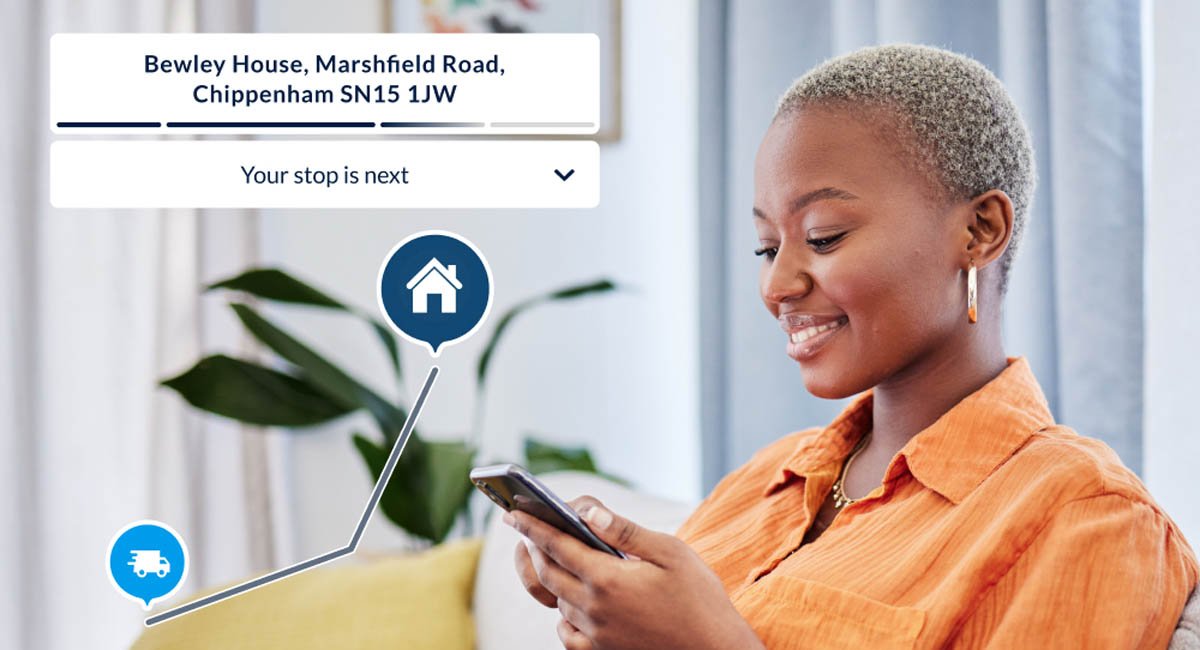
Real time Tracking and ETA delivery reminder software
If a delivery fails on the first attempt it is easy to blame the customer, but if the delivery window you offer and communicate is several hours long and you don’t offer any kind of delivery tracking then you are not really offering a delivery service that consumers now expect.
Customers expect the same level of service they get from Uber or food delivery apps that track their driver/order and this is also true for their business deliveries. Customers expect updates on ETAs via email or SMS and want to know where they are in the delivery queue with real-time tracking of their delivery vehicle on a map.
Discover more about order tracking software
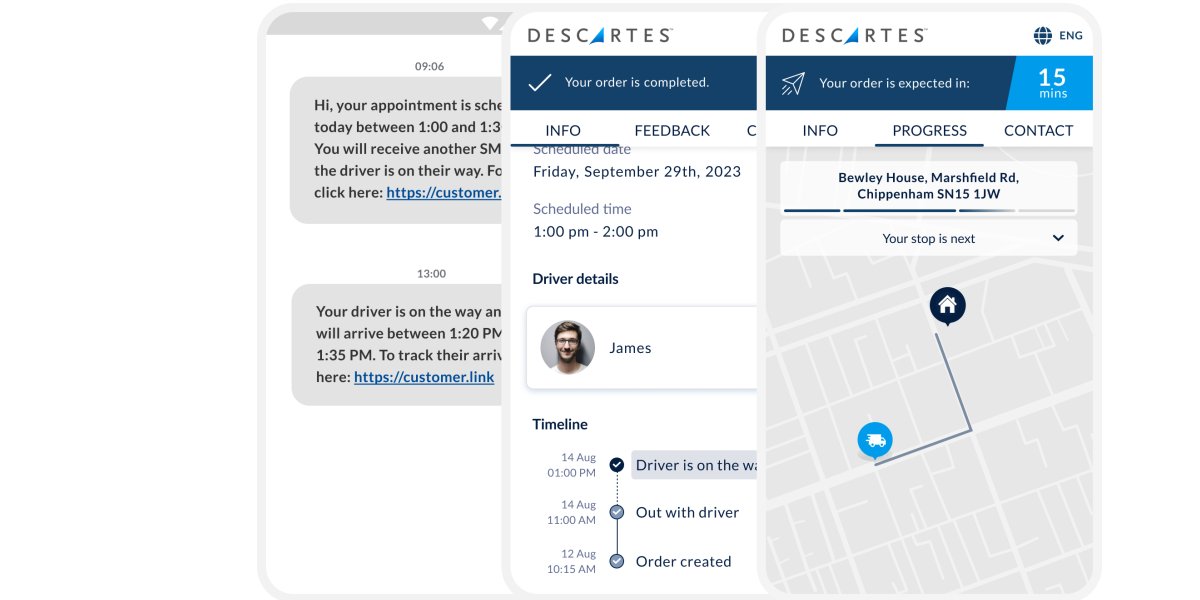
Using the Descartes order tracking and customer notification software enables you to automatically send emails or SMS messages to the customer at each point of the delivery journey, from leaving the depot with an ETA for their delivery through to a reminder as you leave the delivery prior to theirs.
When you can communicate with the customer and inform them of your arrival time, they are usually ready and waiting, this also has the added benefit of reducing the hand over time, and further improving delivery efficiency.
Self-service portals for delivery management
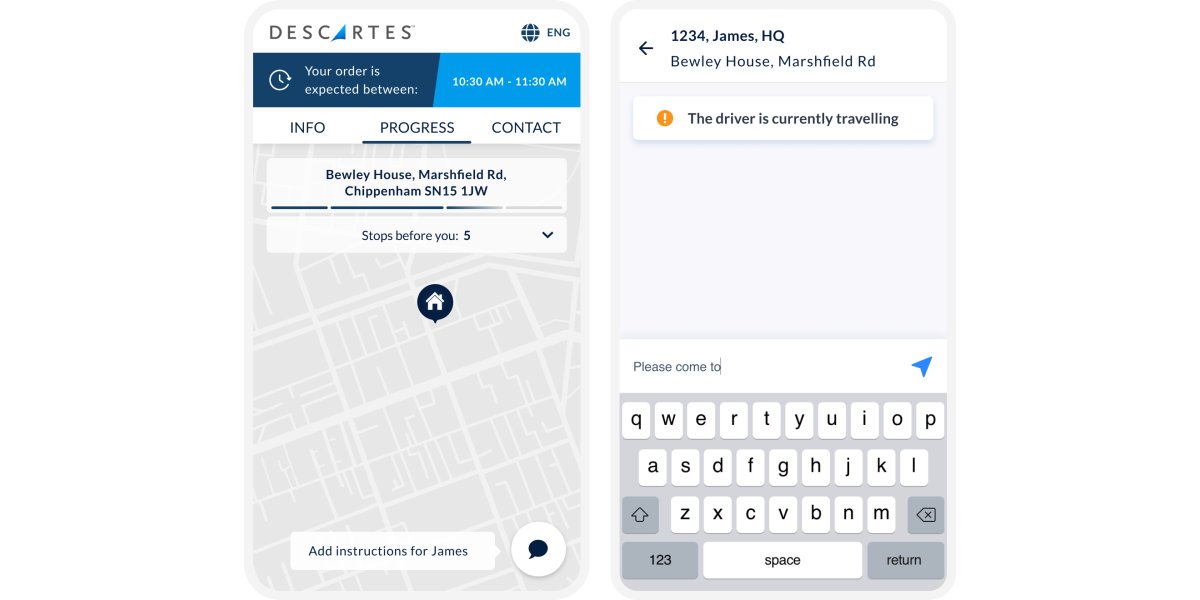
There are many valid reasons why a customer may not be able to answer the door or be available to sign for the order. They might be old or disabled and take longer to get to the front door, or for some reason something else took priority and they had to go out, then, even though the driver arrived on time, the first attempt delivery rate will be impacted.
Self-service portals and customer engagement software can reduce these instances and enable the customer to send a message ahead of the delivery to the driver, such as, “Please wait a few minutes it takes me a while to walk to the door.” Or “please reschedule for this afternoon.” Or simply, “I’ve had to go out please leave the parcel behind the side gate.”
This may seem obvious, but if you lack a delivery management system and haven't enabled your customers to contact with you via a web browser, smart device, or mobile phone, your drivers will be in the dark about what to do when they arrive to make the delivery.
It is even possible to create workflows that will automatically ask the customer to update their delivery information when they receive their first delivery ETA notification on the day.
Two-way communication between customer and delivery driver
Without a delivery tracking solution that enables self-service and two-way communications then a customer who wishes to change, cancel or simply update delivery information, will need to first call customer services, usually experiencing a long wait to talk to an operator and then the information will need to be relayed to the driver by customer services, probably via the transport office, by which time the driver may have already tried to make the delivery. All of this can negatively impact the customer’s experience and result in a low satisfaction score or negative feedback on social media, all of which can damage the reputation of the seller or delivery company.
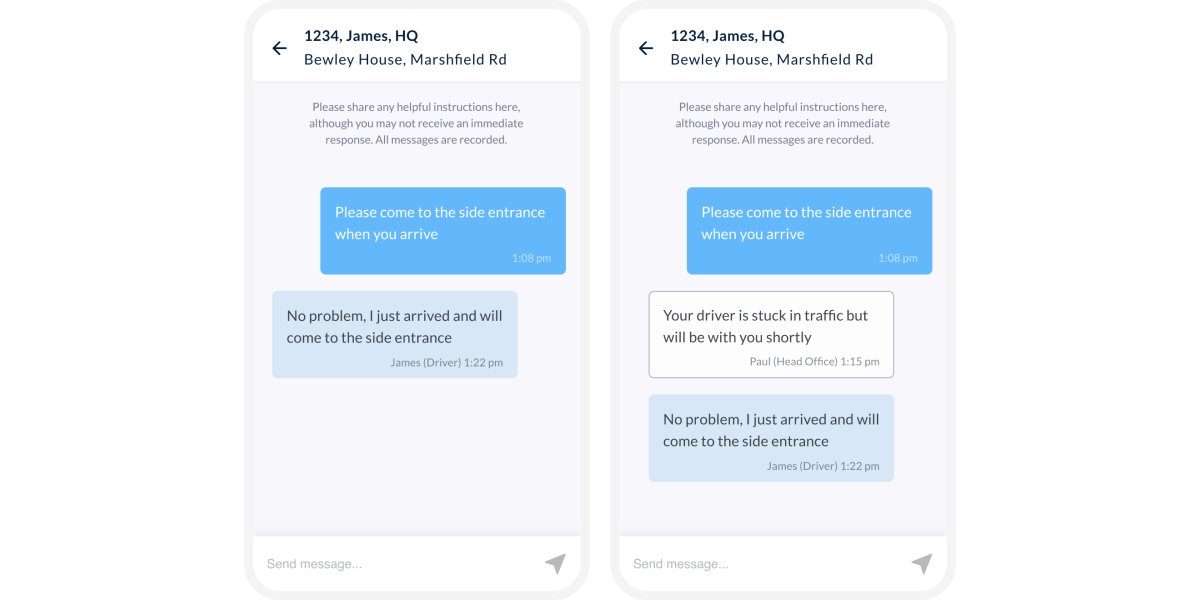
However, if two-way communication is enabled then the customer can easily send a message to the driver, missing out customer services and the transport office, freeing up their time for other issues. It also avoids the issue of exchanging telephone numbers and GDPR compliance.
A two-way communication solution not only equips the customer with an easy way to share information but also equips the driver with a tool to ask directions for a difficult-to-find property, both of which can help improve your first attempt delivery rate.
To understand more about order tracking and customer notification software contact us for a free 30-minute discovery call and find out how it can improve your FADR.


